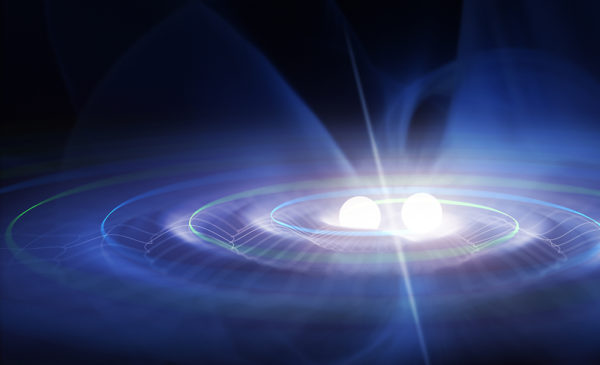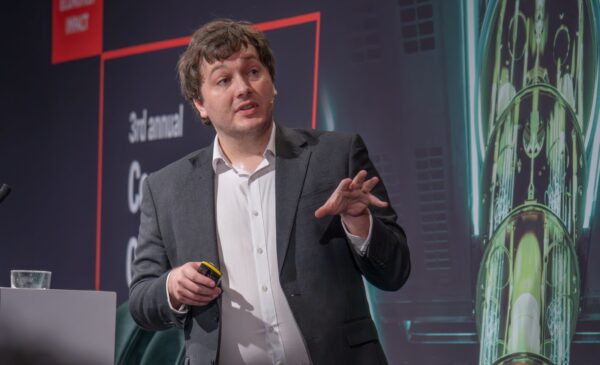A new concept has been developed that has the potential to assist new instruments in the investigation of fundamental science topics such as gravitational waves and dark matter.
The concept is described in a paper written by UK Quantum Technology Hub Sensors and Timing researchers at the University of Birmingham and published in Communications Physics.
It proposes a new method of using optical cavities to enhance atom interferometers – highly sensitive devices that use light and atoms to make ultra-precise measurements.
Although itself challenging to implement, the concept presents a method of overcoming substantial technological challenges involved in the pursuit of atom interferometers operating at extreme momentum transfer – a technique which would allow atoms to be placed into a quantum superposition over large distances.
This is key to enabling the sensitivities required for these devices to investigate signals from dark matter and gravitational waves. The exploration of dark matter, and the detection of gravitational waves from the very early Universe is key to developing our collective knowledge of fundamental physics.
The new paper, written by Dr Rustin Nourshargh, Dr Samuel Lellouch and colleagues from the School of Physics and Astronomy, describes how synchronisation of the input pulses, to realise a spatially resolved circulating pulse within the optical cavity, can facilitate a large momentum transfer without the need for drastic improvements in available laser power.
Investigating dark matter and gravitational waves will not only facilitate a better understanding of the Universe’s history, but will also drive new ideas for improving the future sensitivity of atom interferometers. This will also be relevant to further exploiting atom interferometry in practical applications, such as providing new tools for navigation through enabling increased resilience against loss of GPS signals.
“This optical cavity scheme offers a route to meeting the immense laser power requirements for future atom based gravitational wave detectors.”Dr Rustin Nourshargh, former doctoral researcher at the University of Birmingham and now Scientist at Oxford Ionics
“By overcoming some of the most severe current technological barriers, this original scheme has a real potential to enable disruptive sensitivity levels in large-scale atom interferometers”.Dr Samuel Lellouch, Research Fellow at the University of Birmingham




